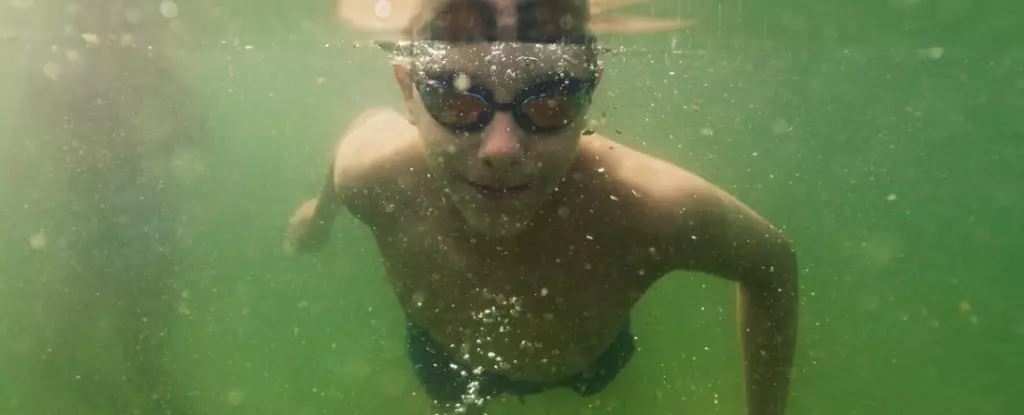As the summer sun shines brightly, the call of the water becomes irresistible. Many individuals flock to beaches, lakes, rivers, and pools to escape the heat and enjoy nature. Freshwater swimming offers a refreshing alternative to oceanic dips, promising an invigorating experience for both the body and the mind. However, lurking beneath the surface of these picturesque settings is a chilling danger: the brain-eating amoeba, known scientifically as Naegleria fowleri. Though infections from this microbe are rare, they pose a significant risk to health and highlight the importance of being aware of potential hazards in seemingly safe recreational waters.
Naegleria fowleri may sound like a fantastical creature from a horror film, but this single-celled organism has been responsible for grave health risks since its first identification in the 1960s. The amoeba primarily thrives in warm freshwater environments, such as hot springs, lakes, and poorly maintained pools, with optimal growth occurring at temperatures between 25°C and 40°C. Unlike its oceanic counterparts, this amoeba cannot survive in saltwater or adequately chlorinated water, like that found in municipal supplies. Consequently, human infection is not a danger in well-treated swimming facilities, giving swimmers peace of mind, provided they remain vigilant.
What makes Naegleria fowleri so insidious is its route of transmission. Ingestion of contaminated water does not lead to infection; rather, the amoeba enters the body through the nasal passages. Once inside, it can navigate through the nasal tissue to reach the brain, where it can cause severe and often fatal conditions such as primary amoebic meningoencephalitis (PAM). The initial symptoms of PAM resemble those of flu—headaches, fever, nausea, and stiff neck—which can lead to a misdiagnosis. By the time the unusual nature of the illness is recognized, it often becomes too late for effective treatment.
In the United States alone, from 1962 to 2023, the Centers for Disease Control and Prevention reported only 164 confirmed cases of PAM, with a staggering mortality rate of approximately 97.5%. Surviving the infection is an incredible rarity, with only four individuals ever reported to have done so. Countries such as Australia have also recorded a limited number of cases, evidencing that while the amoeba is dangerous, the instances of infection remain limited.
While the thought of encountering Naegleria fowleri may put a damper on summer fun, awareness and preventive measures can significantly mitigate risks. The general advice is straightforward: if swimming in freshwater is on the agenda, caution should prevail. It is best to avoid submerging your head underwater, which is particularly challenging for children who often play enthusiastically in water. Parents and guardians should ensure that responsible swimming practices are upheld, including teaching children safe water play habits.
Should you opt for a dip in a freshwater pool, confirming that the pool is well-maintained and regularly sanitized is essential. Adequate chlorine levels will not only hinder the survival of the amoeba but will also reduce the likelihood of encountering other waterborne pathogens. Thus, well-kept swimming facilities become a safer choice for swimmers concerned about water quality.
The excitement and joy of summer swimming should not be overshadowed by the fear of rare pathogens. While Naegleria fowleri remains a genuine concern within certain freshwater environments, the likelihood of falling victim to its infection is extremely low if individuals take proper precautions. Being mindful of where one swims and observing safe practices can effectively preserve the enjoyment of swimming during hot weather.
While the dangers of Naegleria fowleri should not be disregarded, they should be seen in context. Engaging in freshwater activities can still be enjoyable and fulfilling—just remember to approach it smartly. With appropriate knowledge and awareness, people can safely enjoy the refreshing embrace of lakes and pools without necessarily falling prey to the unseen threats that reside within. Safety and fun can coexist when precautions are taken, allowing for a summer filled with remarkable memories by the water.


Leave a Reply